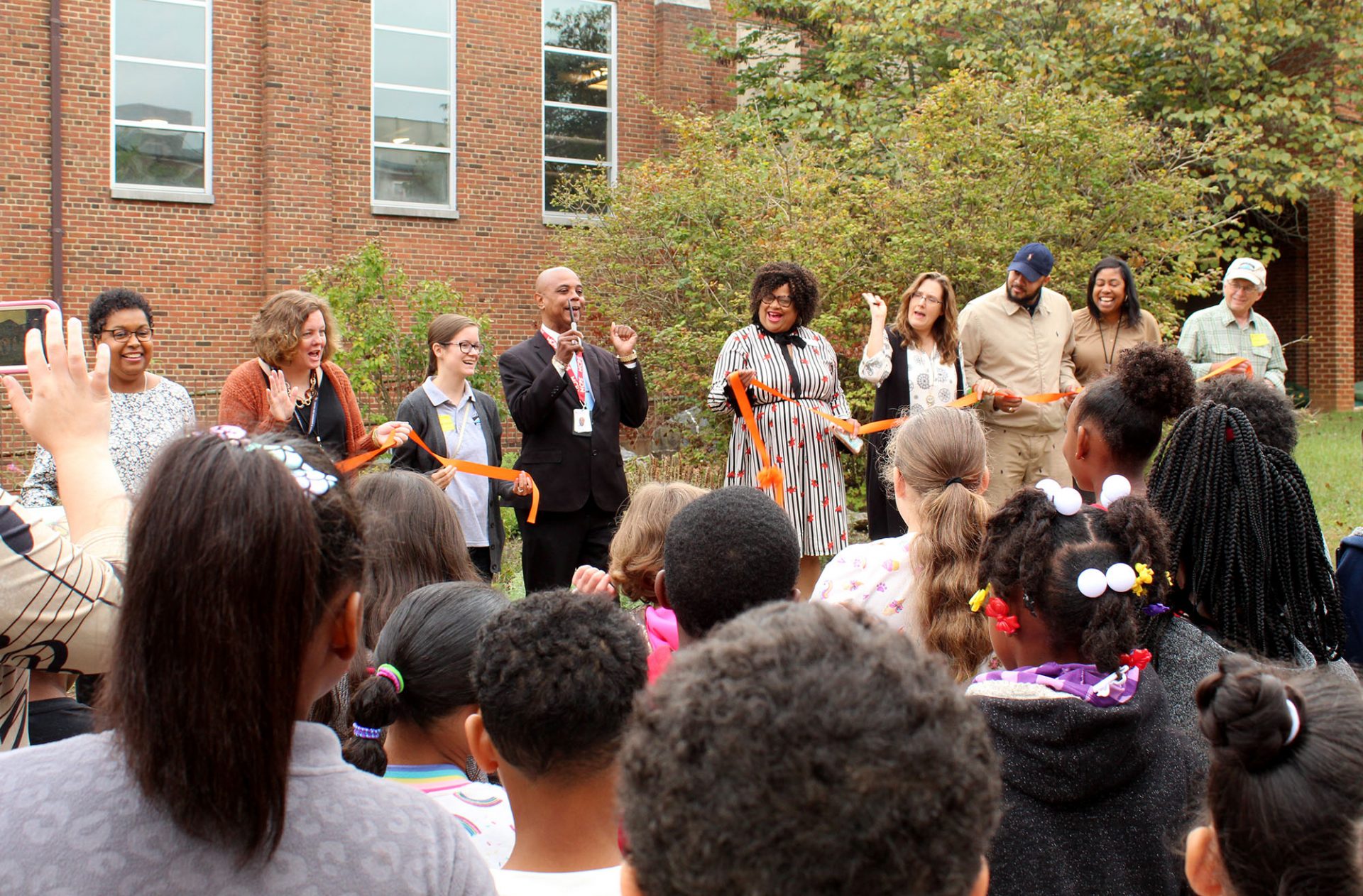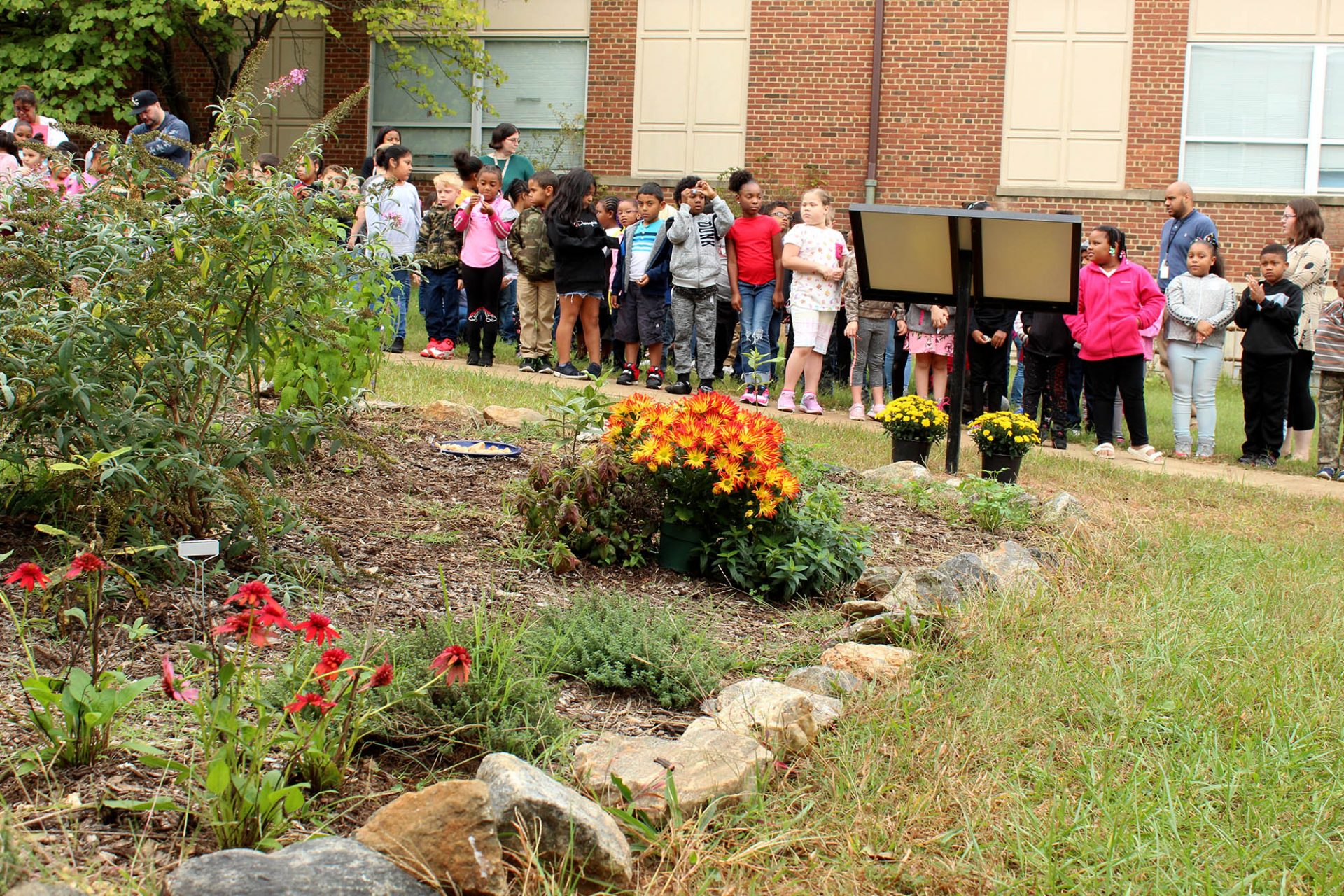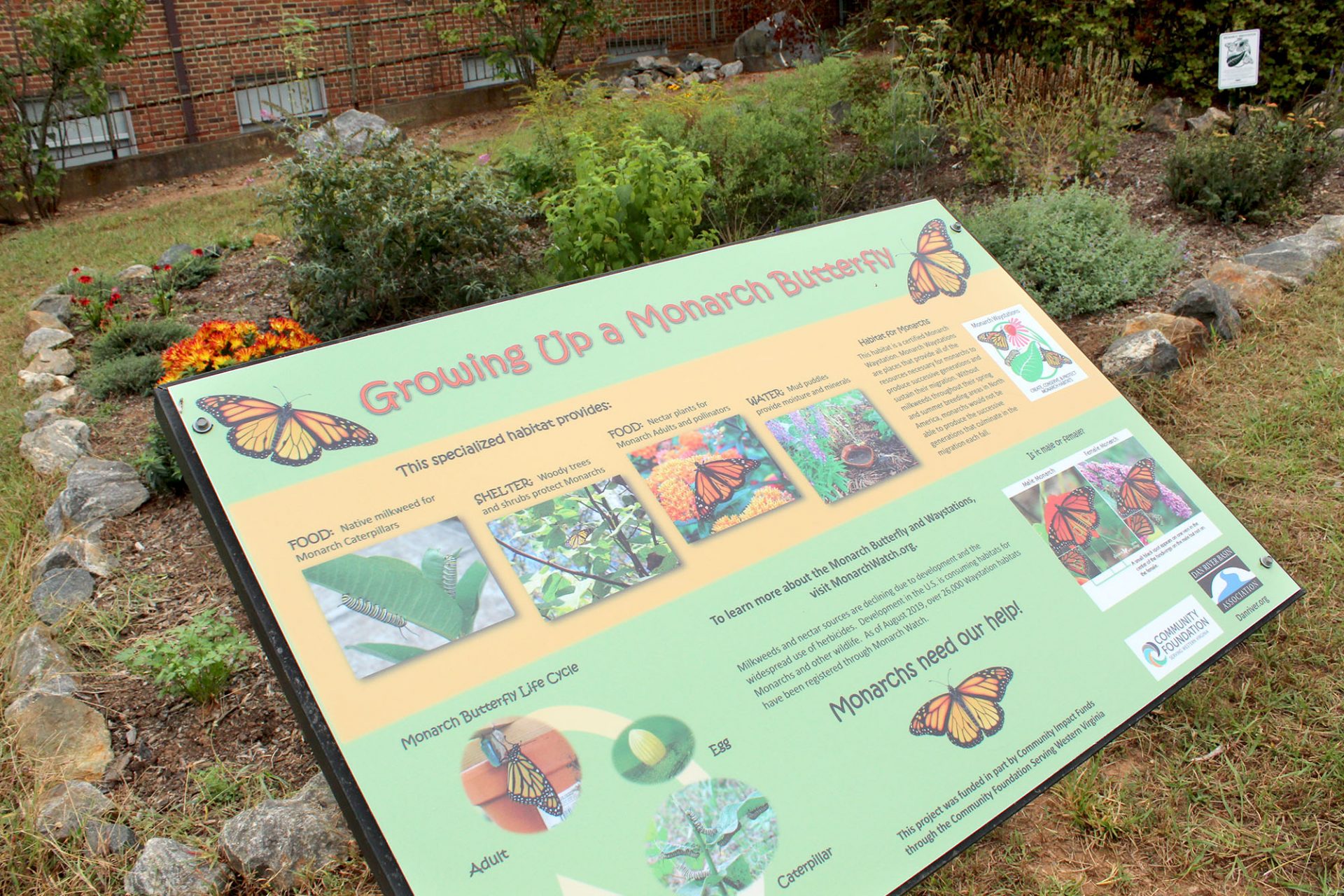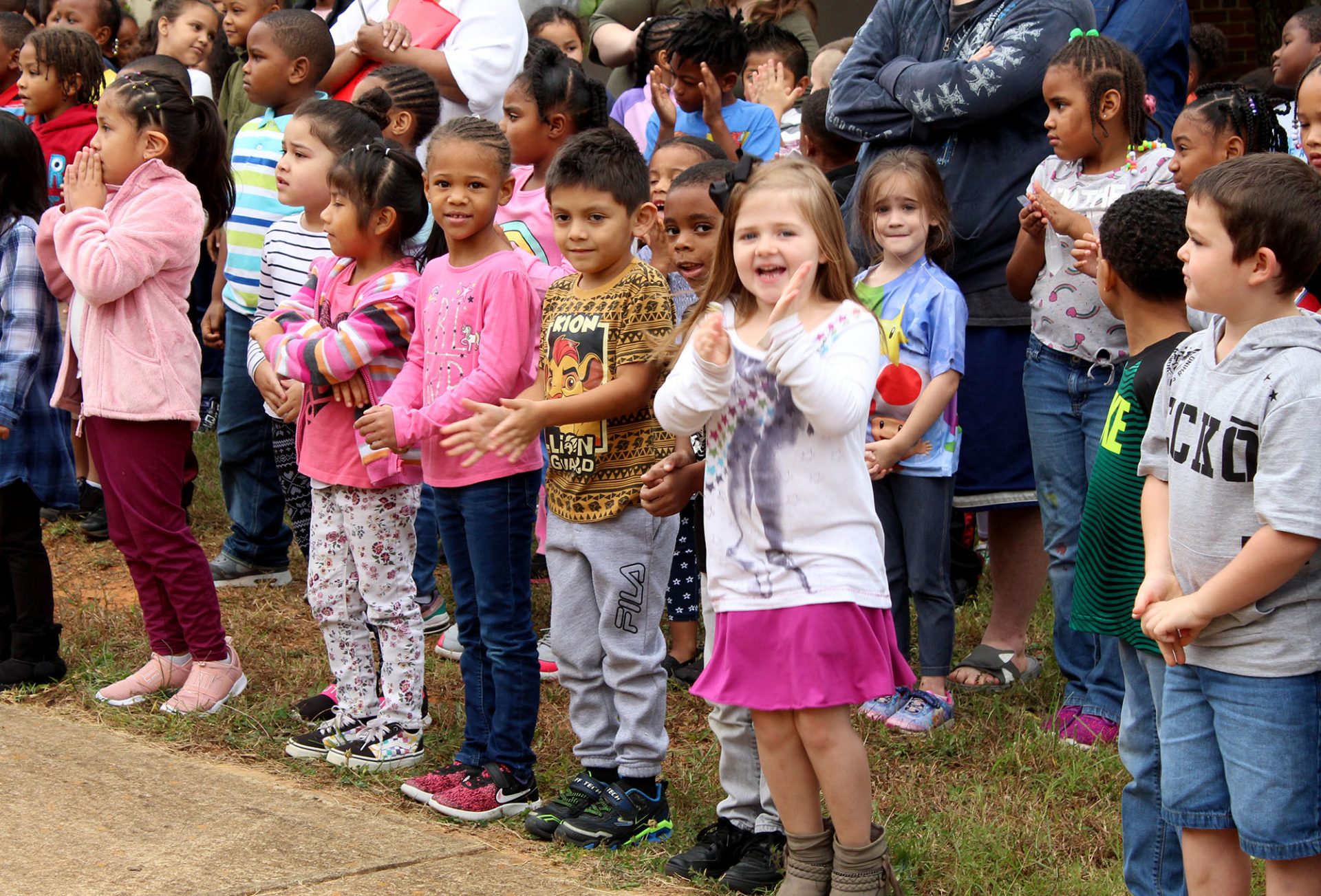
By Kim Barto Meeks
Staff Writer
School officials and their nonprofit partners recently unveiled a new butterfly habitat and outdoor classroom at Albert Harris Elementary School.
The Dan River Basin Association (DRBA) received a grant from the Community Foundation Serving Western Virginia to help implement the Green Schoolyard project last fall, said DRBA Education Manager Krista Hodges. Hodges worked with Albert Harris teachers Laurie Witt and Elizabeth Jent, as well second-grade students, to revive a garden area in the school’s courtyard and help with monarch butterfly conservation.

“The school had some older rain barrels, compost tumblers, and a startup butterfly garden on campus, but to get everything going again, we decided to make this a green pilot project that could be used as a model for other schools,” Hodges said. “We have worked over the last year to get two rain barrels hooked up and running in the school courtyard, turn the startup butterfly garden into a certified Monarch Waystation, and implement a composting program within the classrooms.”

As a certified Monarch Waystation, the site includes a sign from the nonprofit organization Monarch Watch stating that it “provides milkweeds, nectar sources, and shelter needed to sustain monarch butterflies as they migrate through North America.”

 Butterflies are important to the ecosystem because many plants depend on them and other pollinator insects to reproduce. However, the population is declining in North America because habitat for monarch butterflies and other wildlife is disappearing at a rate of 2.2 million acres each year, according to Monarch Watch. Milkweed, in particular, is being killed off by herbicides commonly used in agriculture, depriving monarchs of their main breeding ground. Monarch butterflies feed off of many types of plant nectar, but they only lay eggs in certain types of milkweeds.
Butterflies are important to the ecosystem because many plants depend on them and other pollinator insects to reproduce. However, the population is declining in North America because habitat for monarch butterflies and other wildlife is disappearing at a rate of 2.2 million acres each year, according to Monarch Watch. Milkweed, in particular, is being killed off by herbicides commonly used in agriculture, depriving monarchs of their main breeding ground. Monarch butterflies feed off of many types of plant nectar, but they only lay eggs in certain types of milkweeds.
“The first seeds were planted when second graders wanted to help butterflies in our community,” Witt said. Second graders learn about the butterfly life cycle as part of their science curriculum. By installing rain barrels and using the collected water, she said, “students became environmental stewards.”
During the ribbon-cutting ceremony Oct. 10, Jent recognized her second-grade class last year for moving all the rocks, pulling weeds, and planting flowers to create the garden. “They did an amazing job,” she said.
Hodges also thanked Koger Air, Gateway Streetscape, and the Master Gardeners for donating supplies, expertise, and labor to making the garden possible.
The space includes a newly installed interpretive sign about the importance of protecting monarch butterflies and what their habitat needs to include.
The Community Foundation just approved a grant for the second phase of the project, Hodges said. It will include a weather station, which is part of the fourth grade curriculum; an outdoor whiteboard for students to record their scientific observations; and storm drain marking to educate people about protecting the watershed by keeping trash out of the drain.




